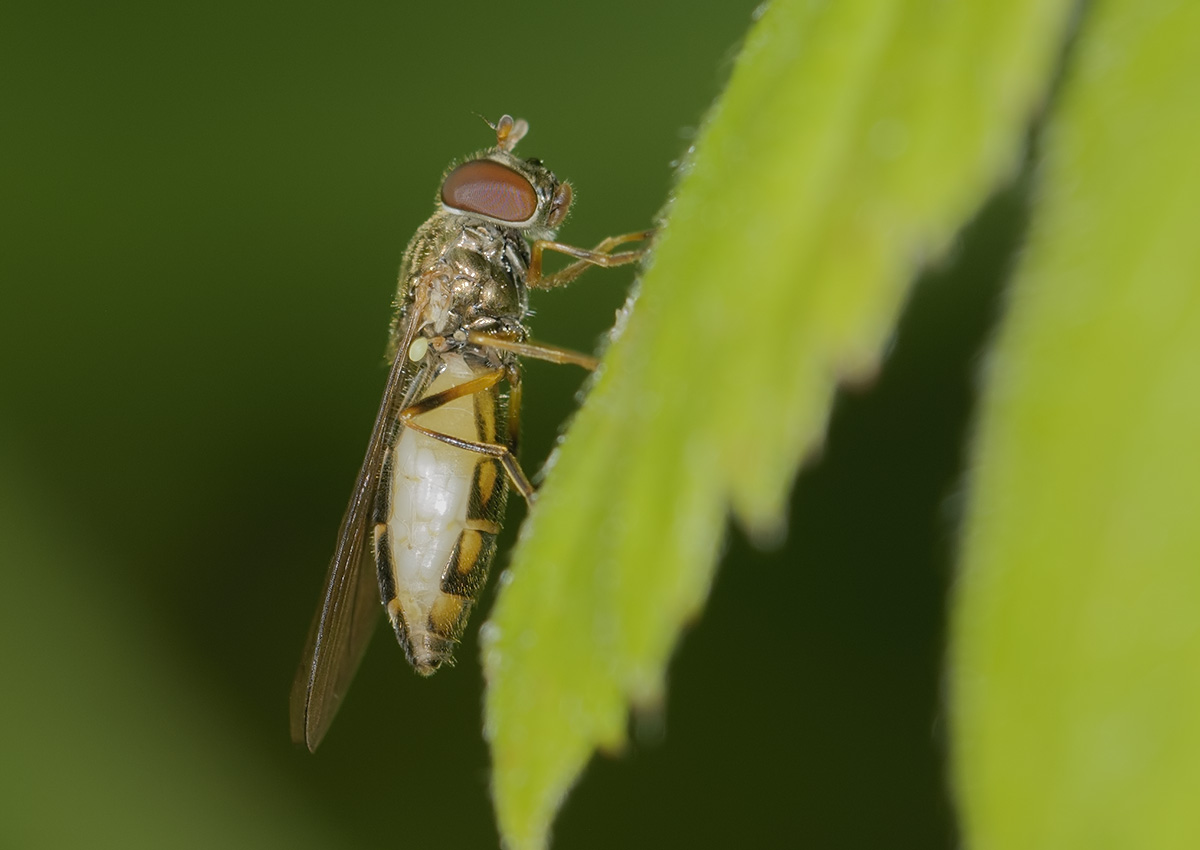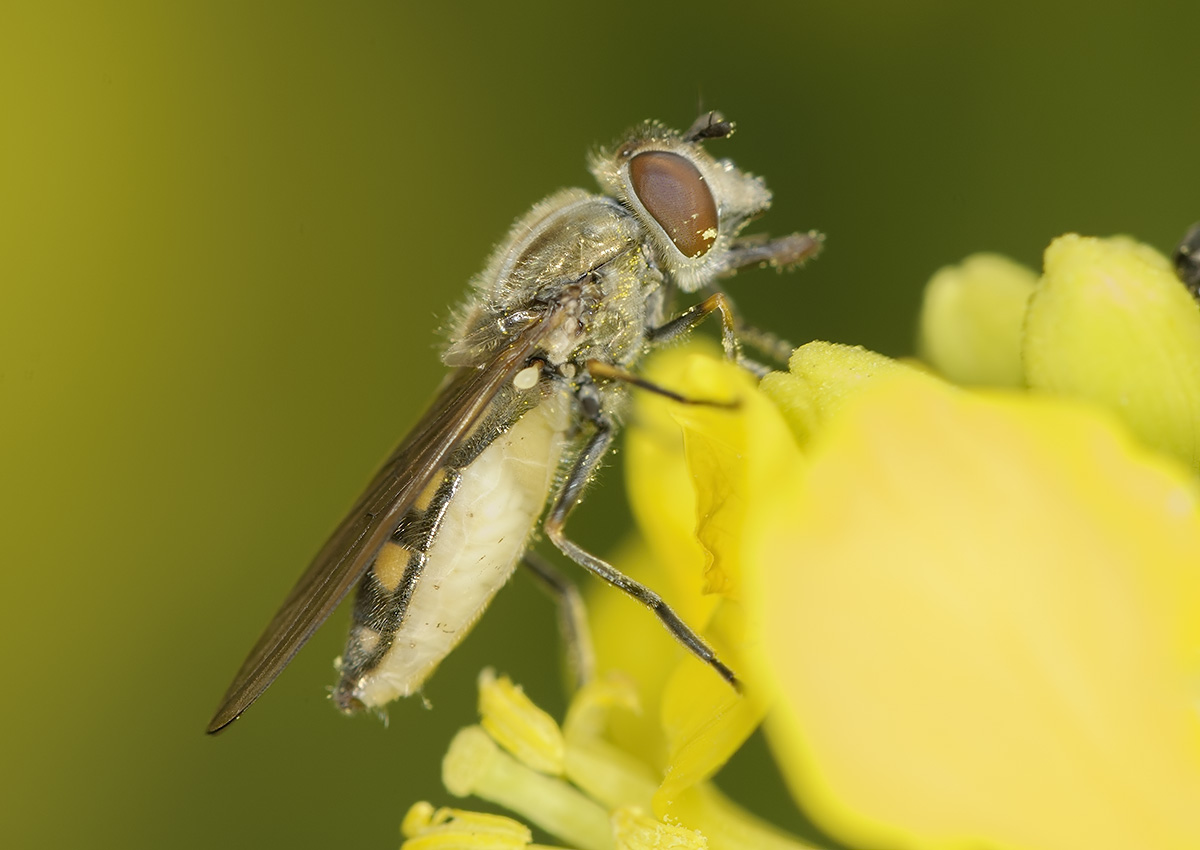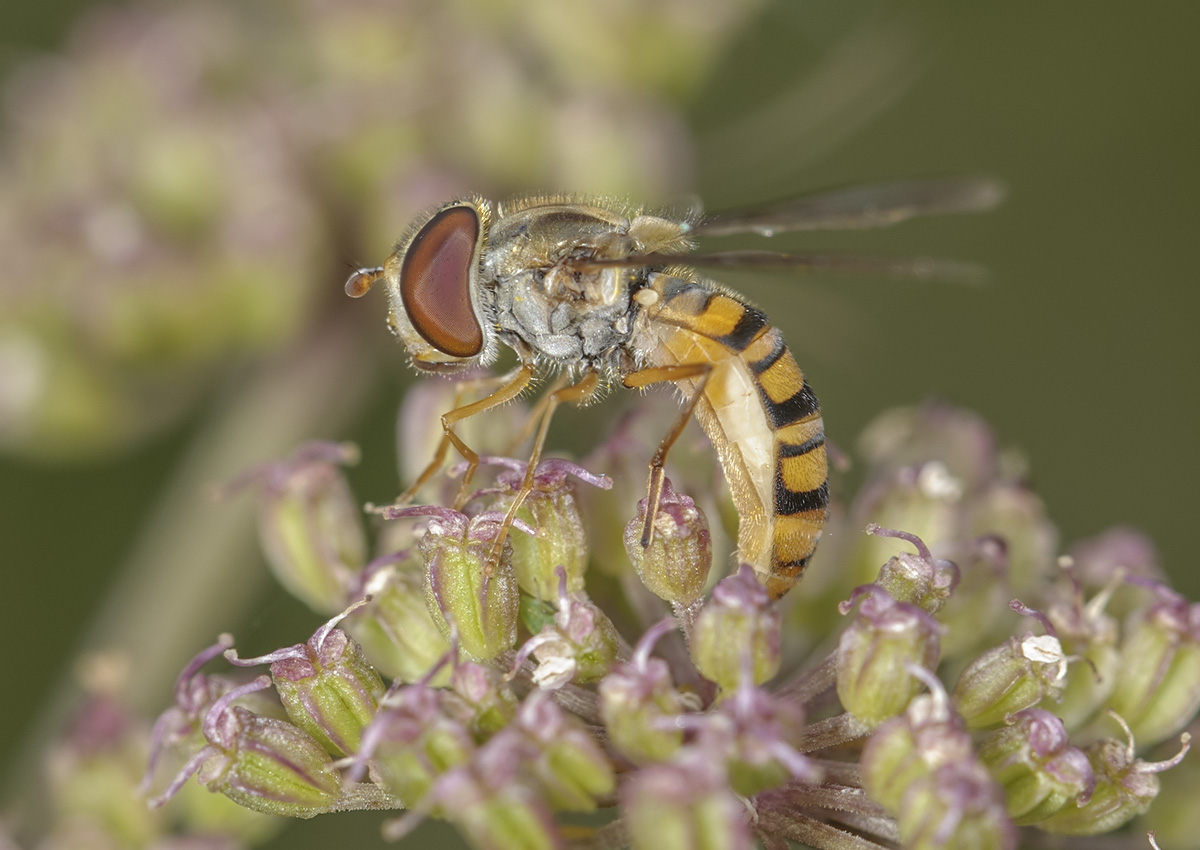
The Society for the study of flies (Diptera)
Affiliated to the British Entomological and Natural History Society (BENHS)
You are not logged in.
#1 2016-01-26 20:07:59
- maxandsue
- Registered user
- Name: Maxwell Pittman
- From: Ullapool
- Registered: 2016-01-26
- Posts: 3
Marmalade eggs?
We found a larva on a leaf - tried feeding with green fly, it loved 'em! It eventually pupated and emerged as a Marmalade.
Now we are not entomologists, just keen photographers, and have a nice collection of the life history of our marmalade up to its release into the garden.
With a Canon 65mm macro lens, the photos are very detailed - but the newly emerged adult appears to have eggs scattered through its translucent abdomen.
Is that really what they are? Little white dots in clumps....
Thanks.
Max
Offline
#2 2016-01-27 02:35:34
- Jaybee
- Registered user
- Name: John Bridges
- Registered: 2013-06-30
- Posts: 26
Re: Marmalade eggs?
The eggs inside of gravid females can be quite easy to see as in the female M.scalare, P. manicatus and E. balteatus below.


Offline
#3 2016-01-28 17:04:35
- maxandsue
- Registered user
- Name: Maxwell Pittman
- From: Ullapool
- Registered: 2016-01-26
- Posts: 3
Re: Marmalade eggs?
Thanks, John. Our specimen was newly emerged from the pupa, and had not yet been returned to the wild - perhaps unfertilized eggs are also visible? Our Baby! 13 of 16 - Marmalade Series IMG_8271a by foetoebare, on Flickr
Our Baby! 13 of 16 - Marmalade Series IMG_8271a by foetoebare, on Flickr
[img]https://flic.kr/p/d7mwZ3
Last edited by maxandsue (2016-01-28 17:06:59)
Offline
#4 2016-01-28 18:13:27
- Jaybee
- Registered user
- Name: John Bridges
- Registered: 2013-06-30
- Posts: 26
Re: Marmalade eggs?
I'll ask Roger Morris to take a look at that image. I'm not sure if they "hatch" already with eggs. Possible that they are the eggs of a parasite of course.
Offline
#5 2016-01-29 14:13:40
- Jaybee
- Registered user
- Name: John Bridges
- Registered: 2013-06-30
- Posts: 26
Re: Marmalade eggs?
I'll just quote Rogers response.
""""I rather think what is visible is more likely to be fat bodies given their distribution.
Females generally need a meal of pollen to aid egg production - good source of protein - a bit like mossies needing a blood meal. """"""
Offline
#6 2016-01-30 22:40:49
- maxandsue
- Registered user
- Name: Maxwell Pittman
- From: Ullapool
- Registered: 2016-01-26
- Posts: 3
Re: Marmalade eggs?
Thanks John and Roger - perhaps even hoverflies get cellulite!
Offline